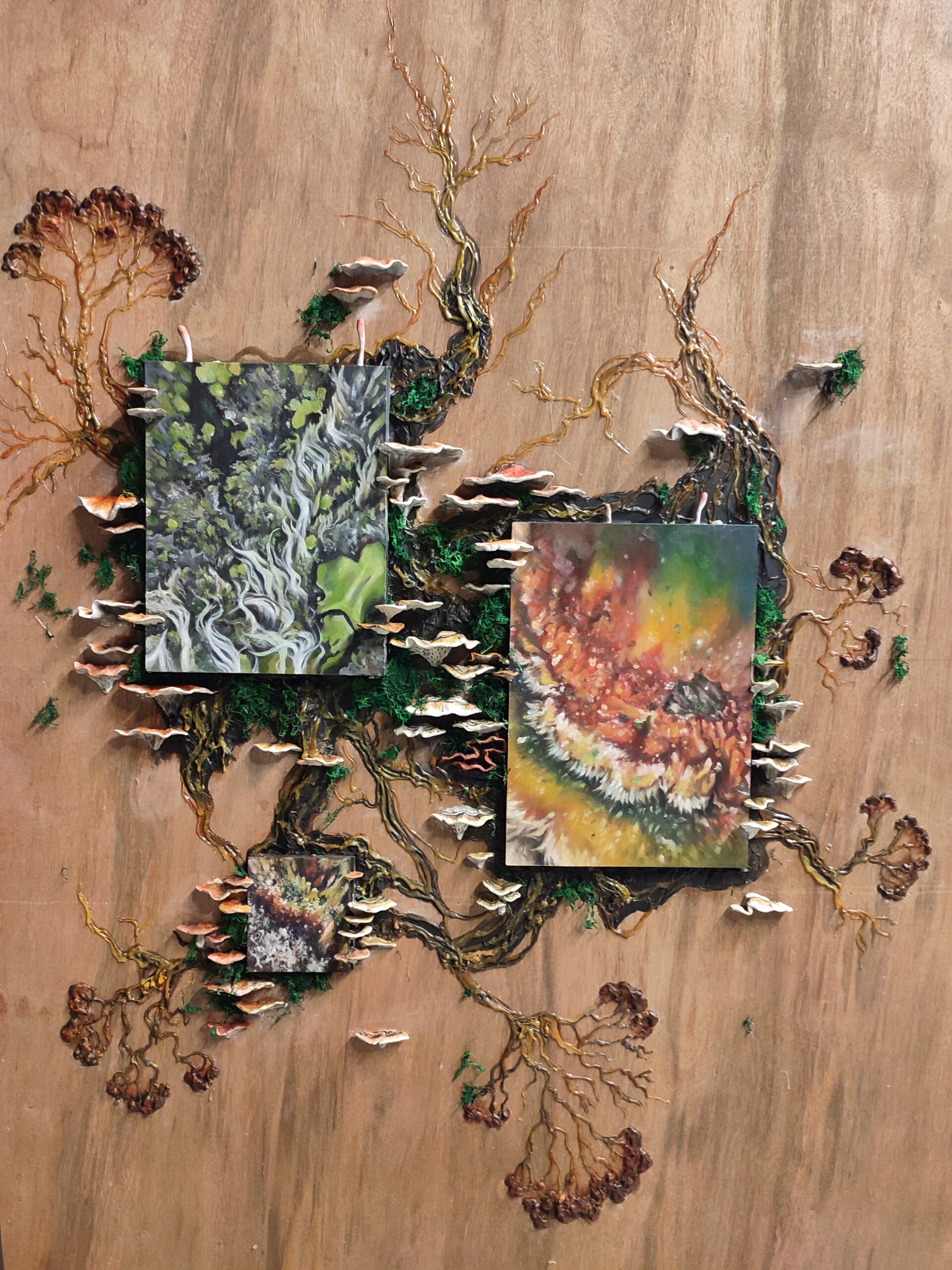Our fifth and final project for AP1 was the ‘Light Project’. This theme could be applied to any project involving light using any medium, giving us a wide scope to experiment over five weeks. I was initially unsure what direction I wanted to take as a result, and considered the idea of creating paintings influenced by the idea of chiaroscuro (meaning dark and light) which is prominent in the works of historical artists like Caravaggio. However, I felt uninspired by this and wanted to try something further outside my comfort zone.
I particularly liked the idea of exploring light as the foundation for all life; sunlight provides the chemicals and energy needed for plants to photosynthesize and create oxygen. This led me to explore plant structures for my project, using microscopic images of various natural forms (such as leaves, flowers, tree bark etc.) as inspiration for photography and painting developments. This would result in almost abstracted paintings, focusing on texture, line and colour. In addition to the concept of light in nature, this would be combined with scientific light and anatomy through the use of a microscope. During our group book sharing activity, I searched for artists who also explore nature themes in their work. I came across photographers including Guy Bourdin, Aaron Siskind, Minor White and Ansel Adams. Although most of these examples use black and white photography to capture industrial surfaces, I used colour photography to reflect the beauty of nature and explore how light effects these colours.
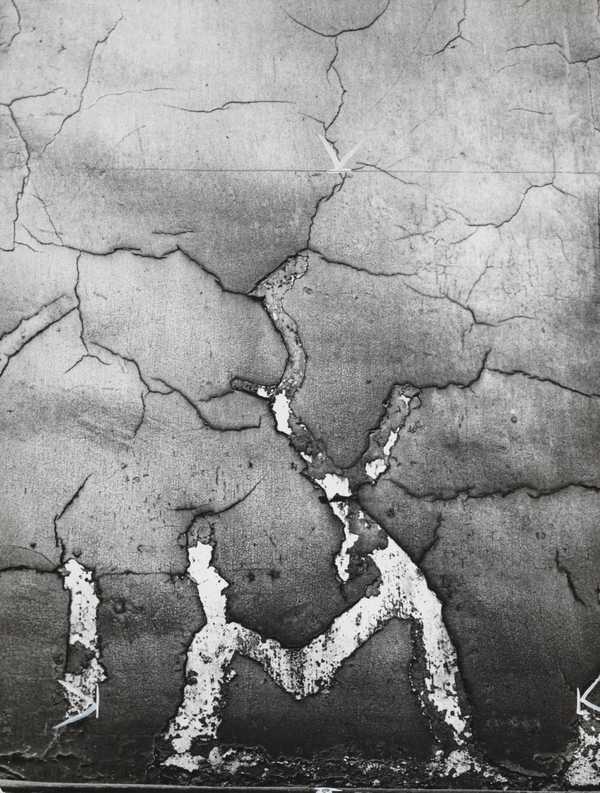


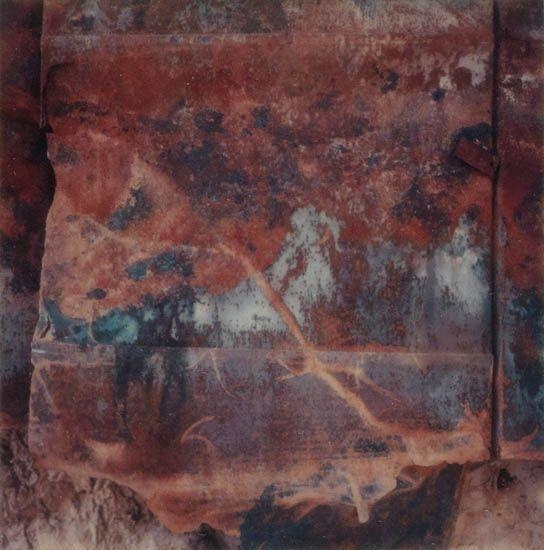
I was also inspired by Kylie Sandford’s artwork, which I came across through the 2023 Jackson’s Art Prize. Her work is motivated by the surrounding natural environment, so she spend a lot of time in nature and taking photographs. Sandford describes her artistic process as experimental, exploring colour and texture through thick application of pastel, and chooses her colours based on what she can ‘see and feel’. Her colour palette is a ‘heightened or saturated’ version of reality, playing with contrast or optical colour to make the image more impactful. I particularly like her use of composition, colour and texture, resulting in visually striking, abstracted images of nature.

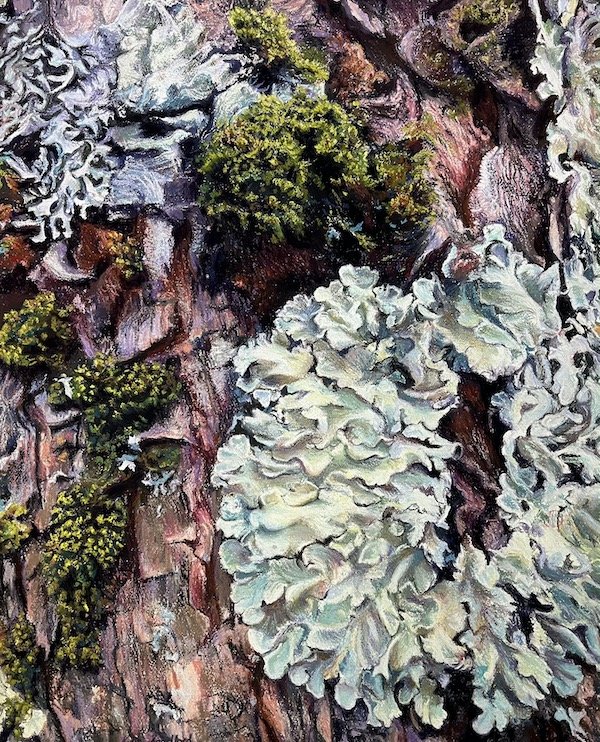
I decided to use a phone microscope to capture natural forms at 30x zoom, resulting in images that look as though you are viewing from a distorted lens.
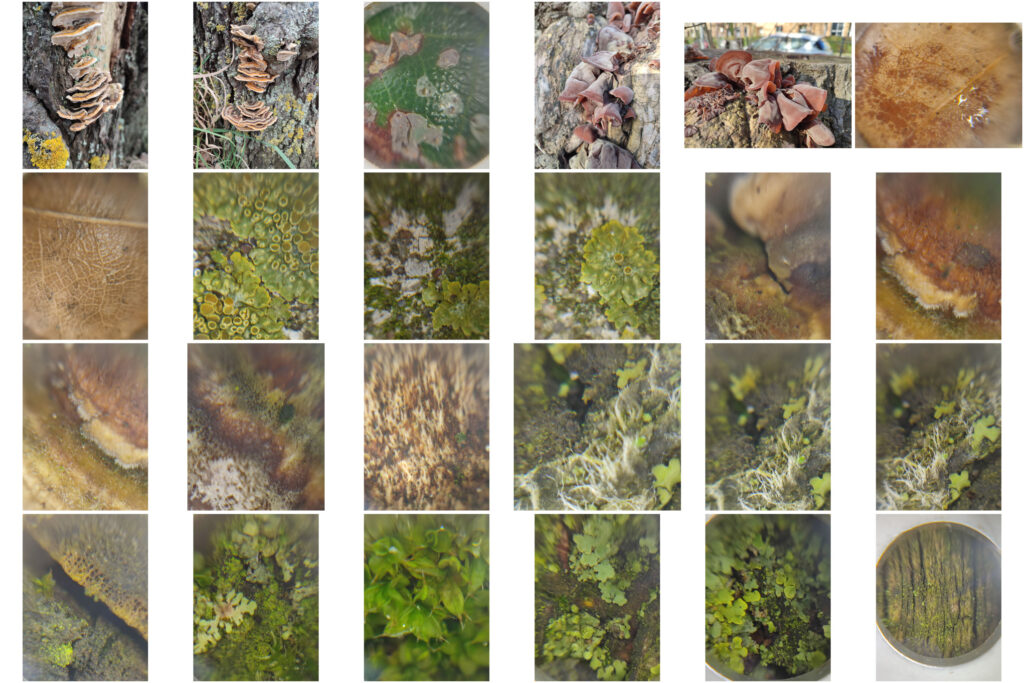


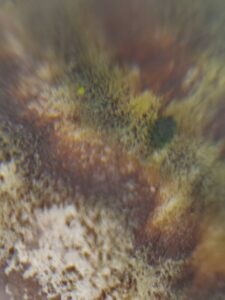
I particularly liked the effect of the fungi (last two images), and considered how this life form is connected to ideas around death and decay (as fungus grows and thrives on decaying matter). This led me to think about The Last Of Us- my favourite game with a TV show adaptation surrounding a disease caused by cordyceps- so I used this to influence my project.
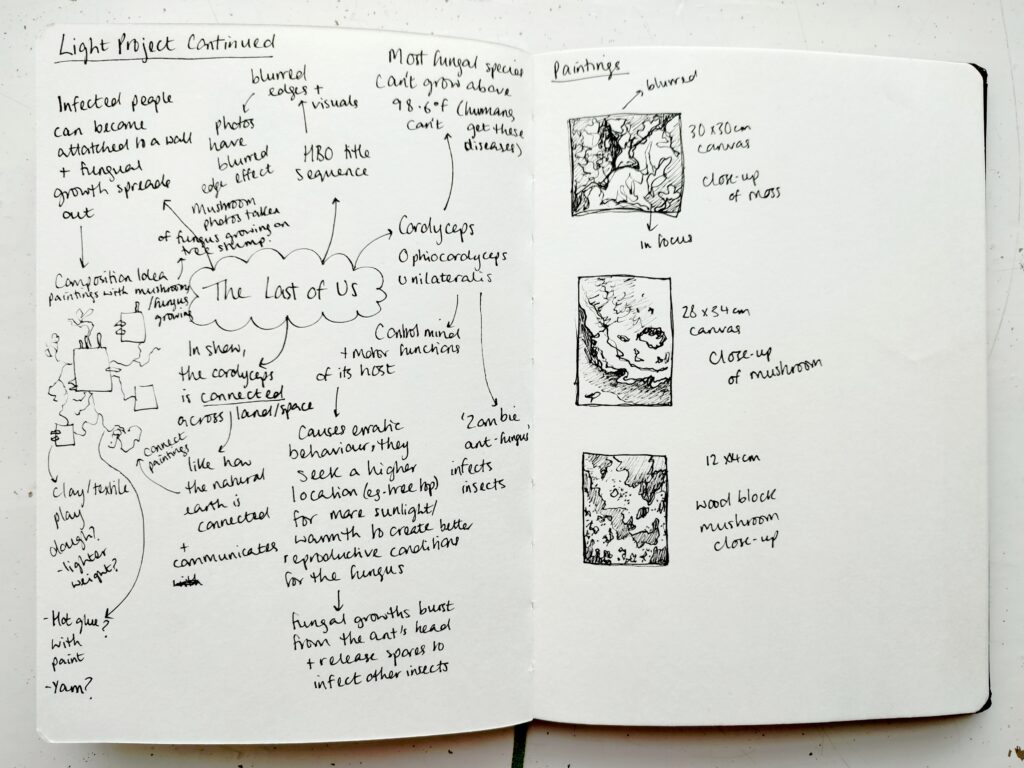
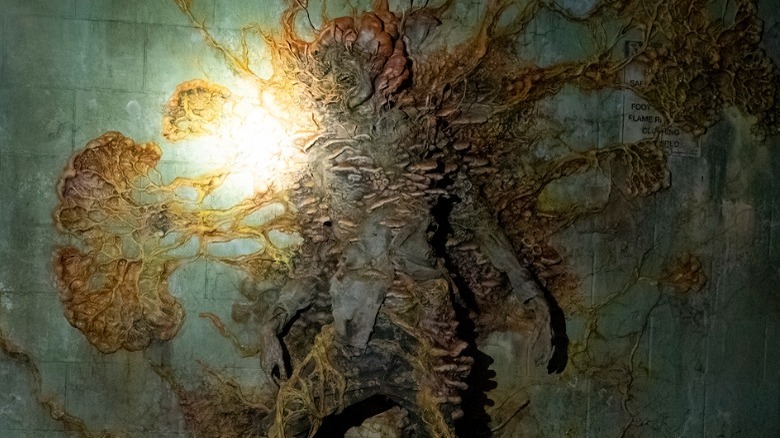
Fungi are multicellular organisms made of filaments called hyphae. These grow in long branches which form a network of threads growing several maters in diameter, called mycelium. Saprotrophic fungi are responsible for the decay of organic matter, using enzymes secreted from the hyphal tip to gain nutrients from the substance they grow from, absorbed through hyphal walls. Cordyceps militaris can be both parasitic and saprophytic, meaning they can grow without a living host. Fungi use spores to reproduce- spread by wind, rain or insects- to grow hyphae in new environments. In parasitic cordyceps, the fungus infects ants through spores that penetrate the exoskeleton and invade the motor nerves of the ant. The ant looks for a humid microclimate to encourage its growth, attaches to a leaf vein and dies, while the fungus feeds on the ant’s corpse until a fruiting body bursts through its head, releasing spores to infect more ants.
Cordyceps zombie fungus takes over ants’ bodies (nationalgeographic.com)
On the 10th March, I visited a newly installed exhibition, ‘Stinkhorn’, by Chris Coatham and Joel Davidson at Edinburgh Sculpture Workshop.

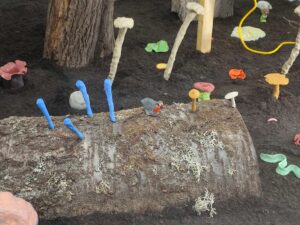


“For STINKHORN the artists present a magic realist semi-naturalistic tableau of a fantastical woodland scene. A cornucopia of animals, plants and fungi – populate the scene, realised through a combination of sculpted ceramics, cast silicone and found materials. The flora and fauna appear as if frozen in a kind of hallucinogenic museum display, juxtaposing the hand-made quality of sculpture with imagery that suggests a more pre-human state of being.”
Although both artists’ practices explore sculptural mediums, Joel Davidson’s work particularly delves into the weird, reflected in the strange cow figure in the center of the scene and the title of the work. The title of the exhibition refers to the stinkhorn fungus (Phallus Impudicus), which is common to UK and European coniferous woodlands. The term ‘Phallus‘ relates to its phallic appearance, while impudicus is Latin for ‘immodest’ or ‘shameless’; in 1597, herbalist John Gerard referred to the stinkhorn as the ‘prike mushroom’, and it has various similarly crude folk names such as ‘deadman’s cock’. The mushroom is also recognised for its rotting meat smell. I was inspired by the use of clay materials in replicating these growths, so I explored this by creating clay fungal growths for my paintings and the wall on which I would install them.




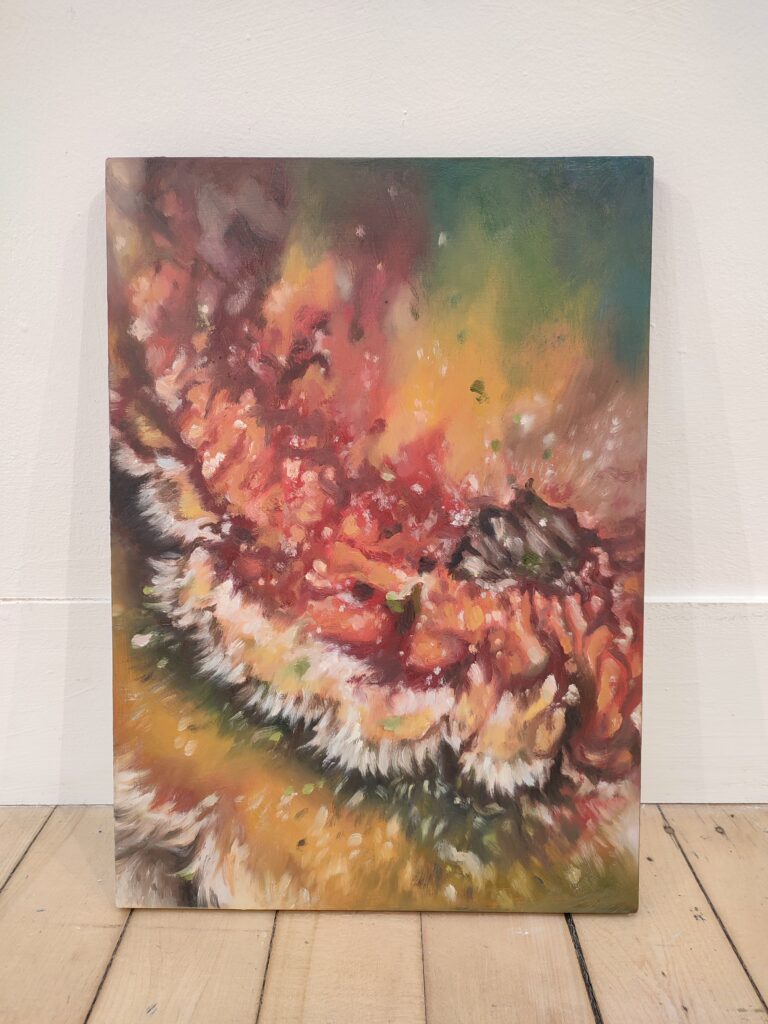

In beginning making my final work, I began with exploring arrangements of the paintings and then attached them to a 215x125cm fake wall. I then used a variety of materials including clay, paper mache, hot glue, fake moss and acrylic paint to recreate the fungal growths seen both in nature and from The Last Of Us. I initially faced challenges with keeping the paintings attached to the wall, but hot glue seemed to be the strongest method. I was really pleased with how the piece came together and was excited to explore installation methods for the final exhibition.

I decided to title the work ‘Mycelium’. This connects to the idea of light in terms of nature, growth and cells, but contrasts in fungi specifically, which instead feeds on decaying substances or living hosts, linking to ideas around death and darkness. Mycelium also refer to the network of fungi, relating to themes explored in The Last Of Us.


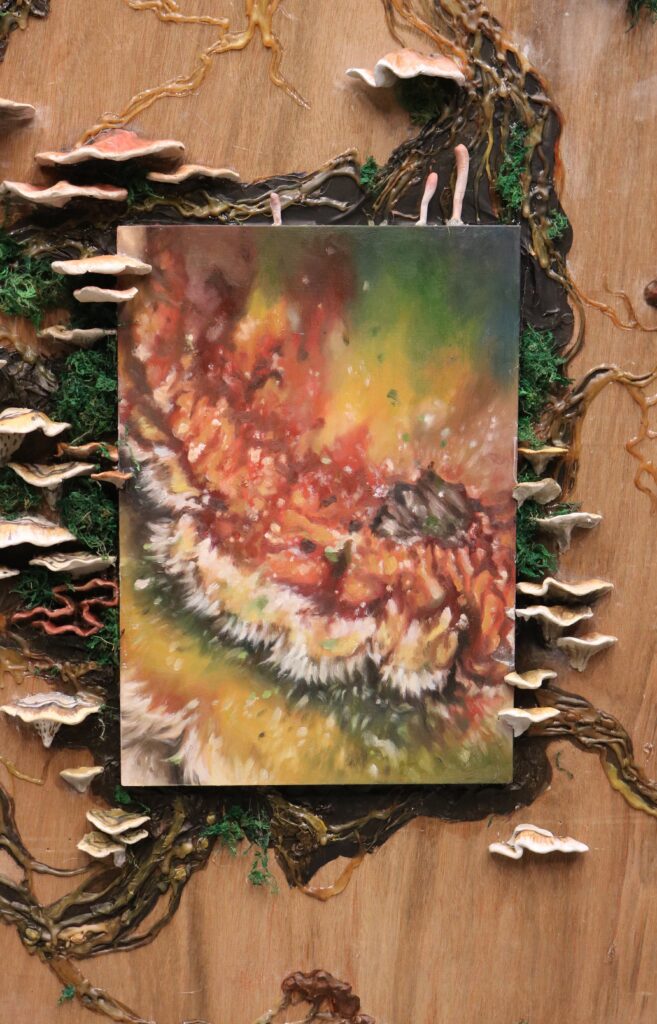
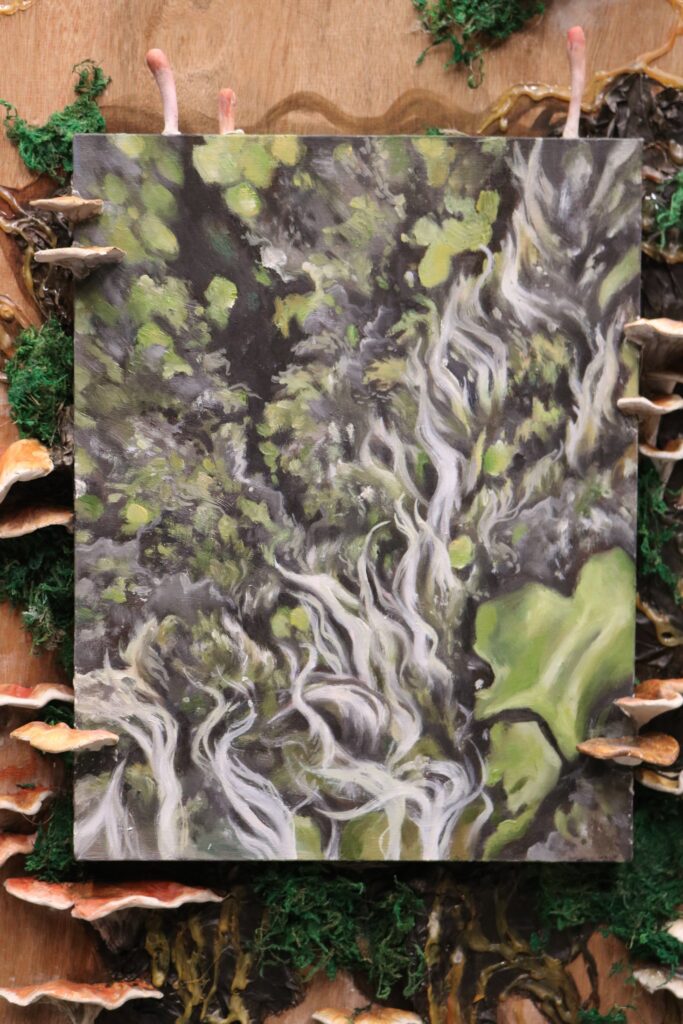
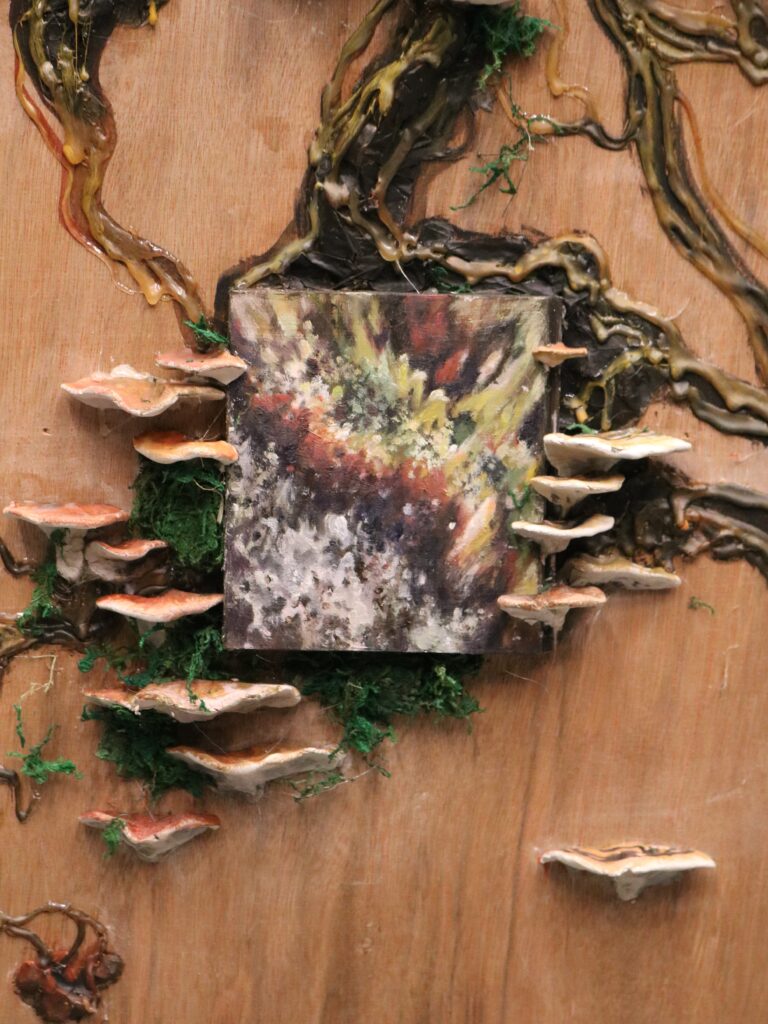


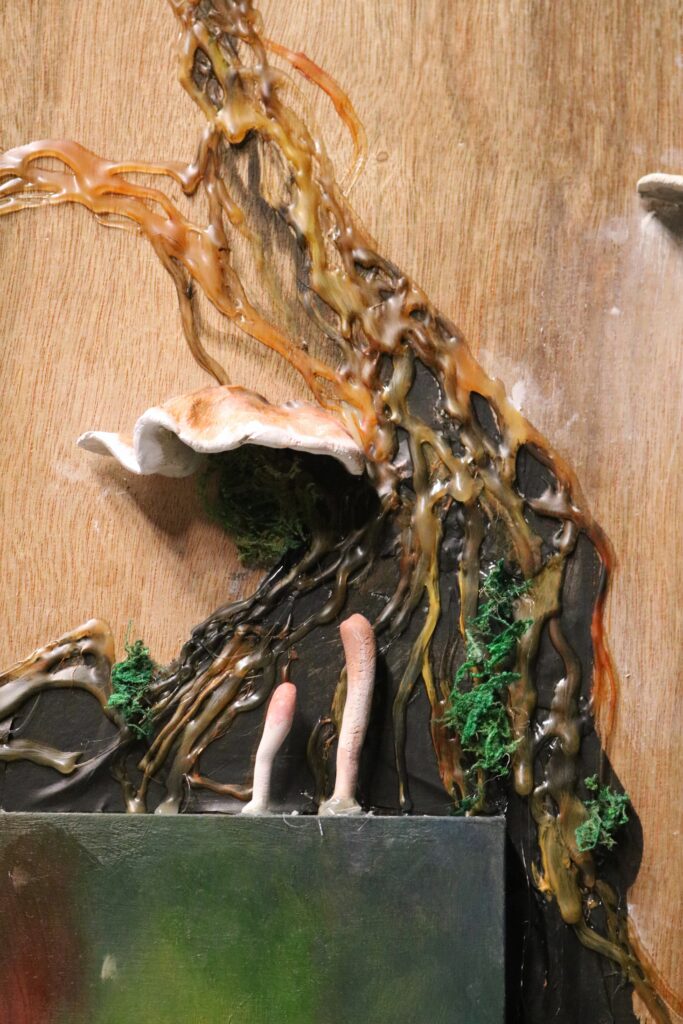
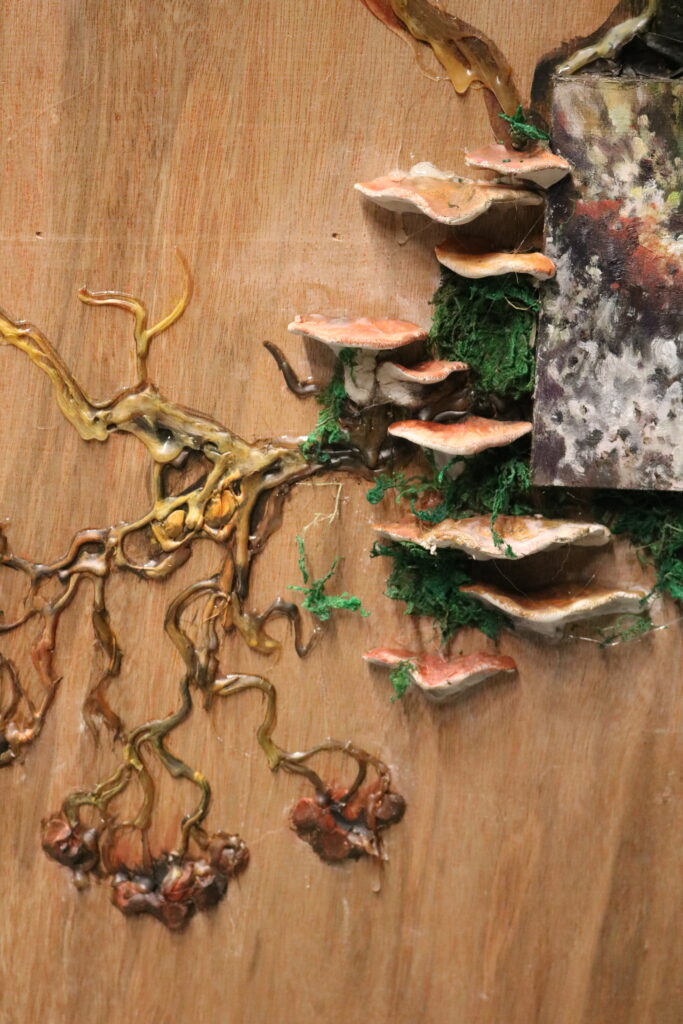

When looking at stills of the game, I thought it would be interesting to experiment with lighting the work itself, such as using torches to spotlight the different areas of the installed piece. After considering various installation methods, I chose to display the work in the dark room using a projected video of particle lights like fireflies (a nod to the ‘Fireflies’ group in The Last Of Us and the load screen) to illuminate the work. I also sourced audio from the game to create an immersive, gaming-like experience when the work is encountered.

Due to technical difficulties, I decided to modify my installation method for the final, end of first year exhibition. I instead used exhibition lights and a speaker to play the music, which I think was a very successful alternative which seemed to be well-enjoyed by those who saw it for the exhibition opening night on Tuesday 2nd April. It was fun to watch people experience the work and recognise its references to gaming and TV, or even just listen to them wonder at what materials where used (I described the work as ‘mixed media’ for this purpose).
Overall, I am very pleased with the development and outcome of my final project for my first year of Fine Art at Edinburgh College of Art and look forward to seeing how my art progresses in the years to come.
My artist’s statement for the exhibition:
‘Mycelium’ is the product of my exploration of light as an essential source for photosynthesis and thus the basis of life itself. In contrast, fungi instead feeds on decaying substances or living hosts and reproduces through the dispersal of spores, linking to ideas around death and darkness. In the same way that nature is all connected, mycelium refers to the network of fungi. These ideas, linked with references to popular culture, are embodied through three paintings of microscopic photographs of fungi intertwined within this fungal network, illuminated by natural light sources from insects.
Kylie Sandford: Looking Closely at Nature – Jackson’s Art Blog (jacksonsart.com)
Chris Coatham & Joel Davidson: STINKHORN – Edinburgh Sculpture Workshop
